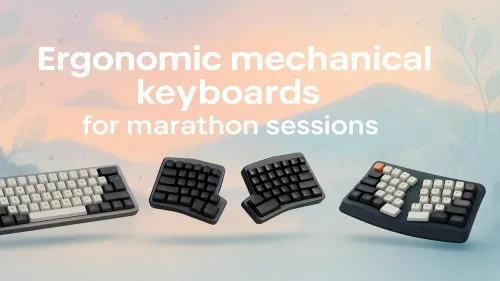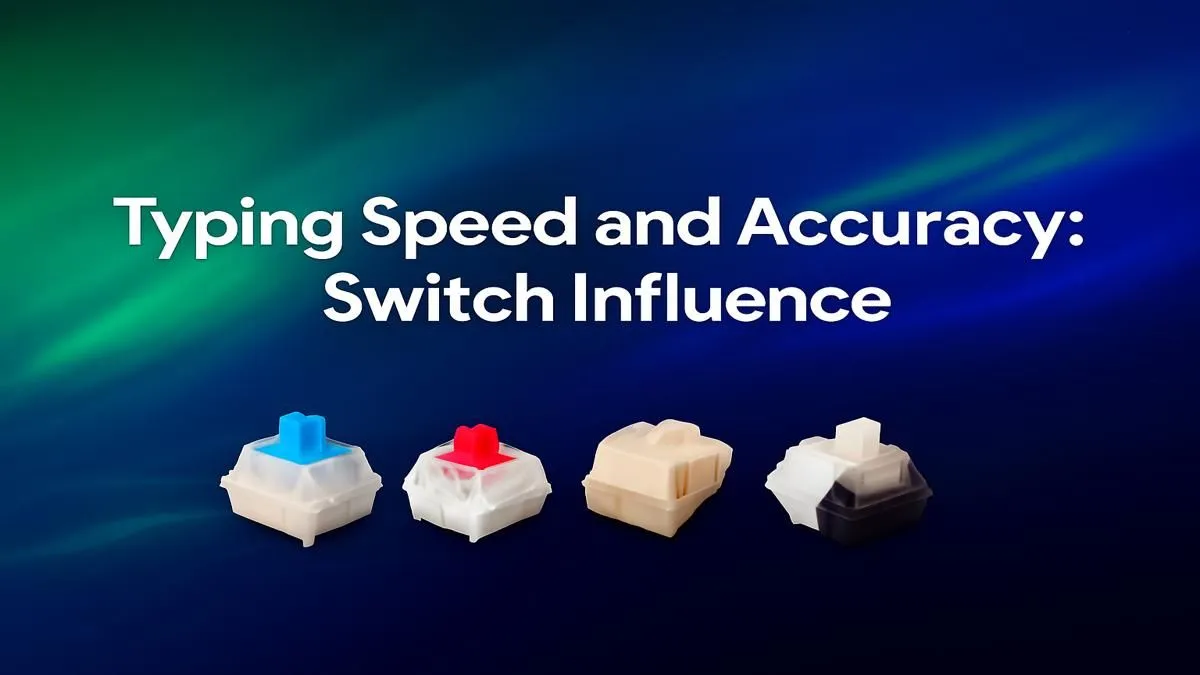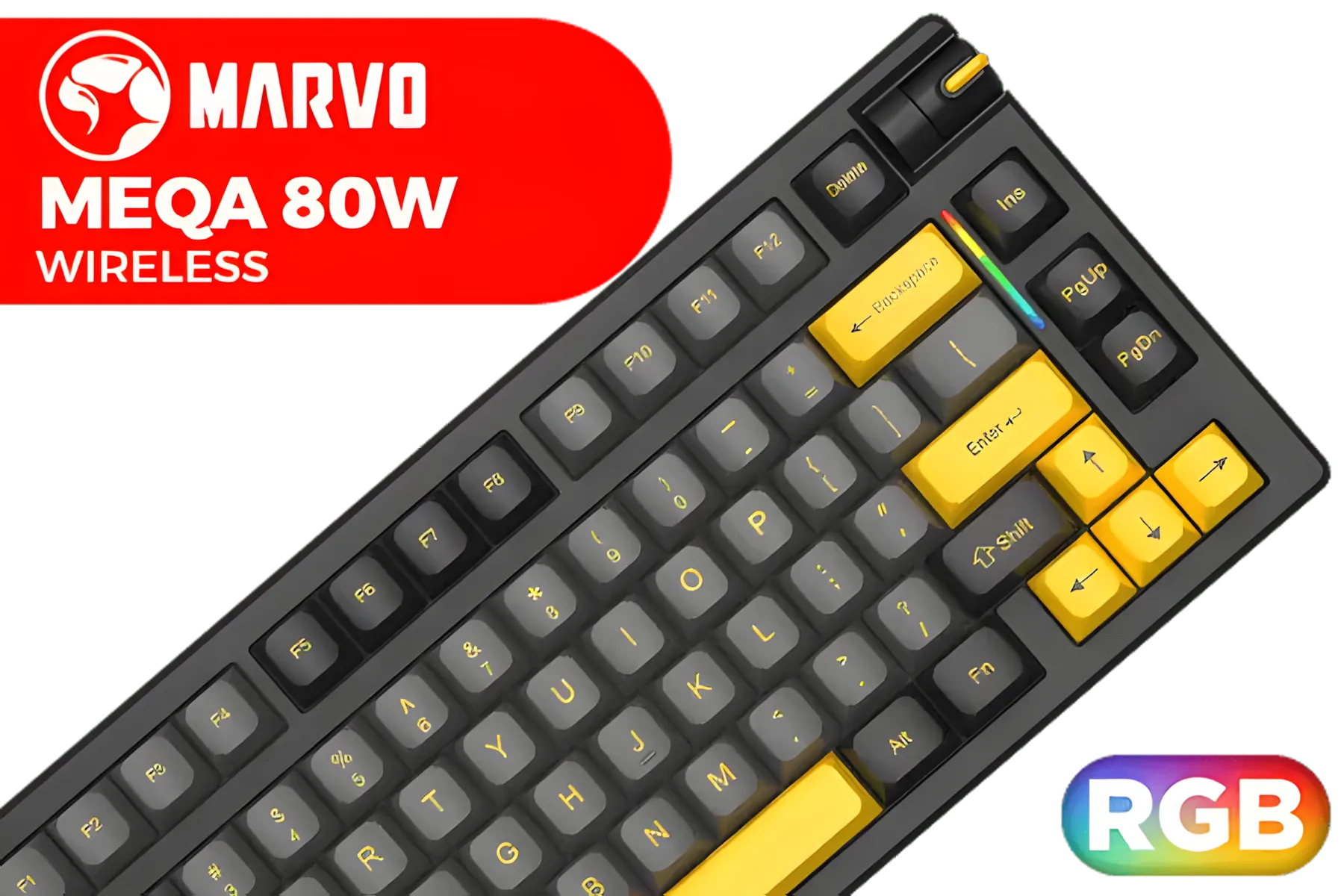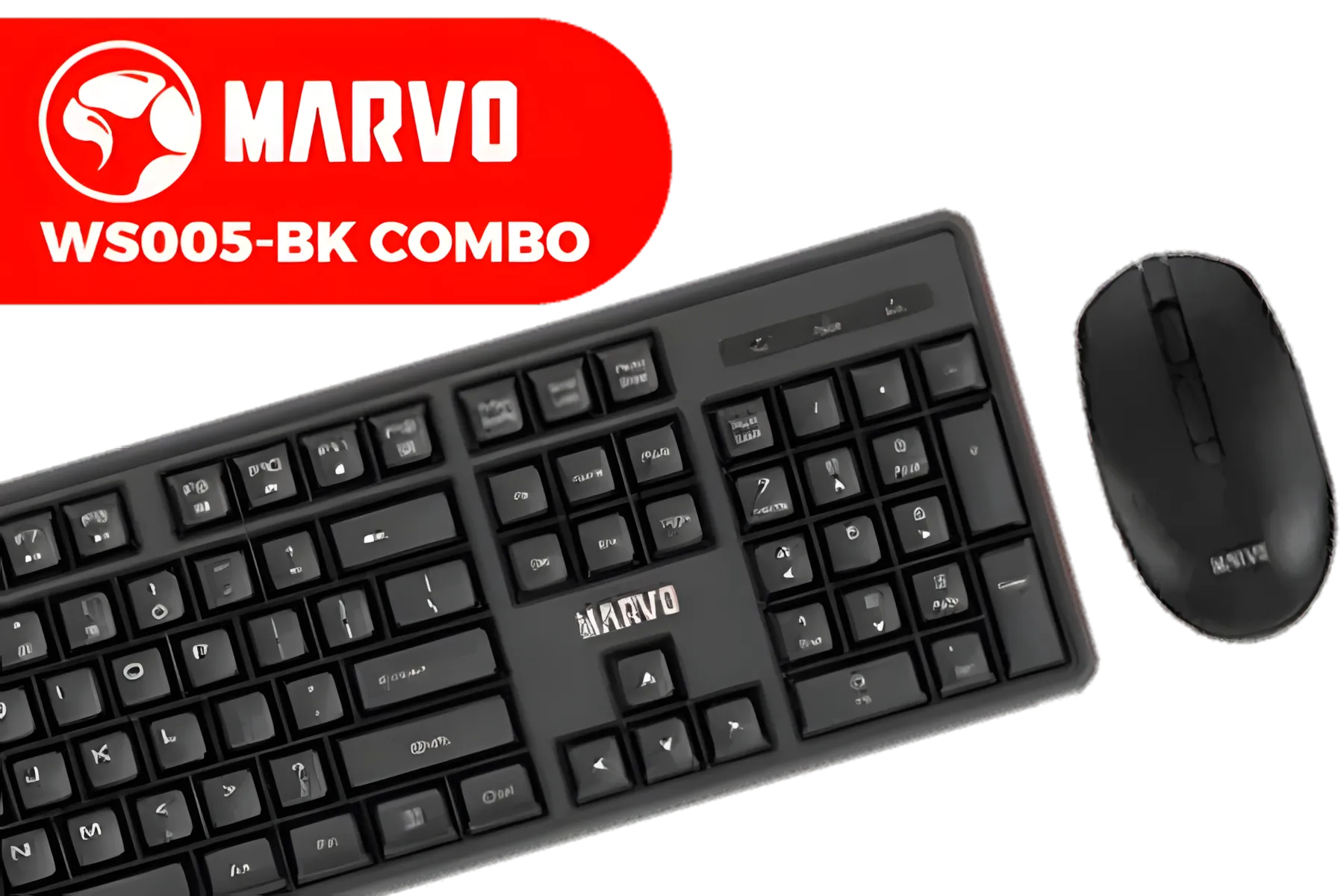
Typing Comfort Unleashed
Ergonomic mechanical keyboards reduce strain during marathon typing sessions💡. Find your ideal fit for ultimate comfort and efficiency.
Looking for the best keyboard switches for typing faster and more accurately? This guide breaks down linear, tactile, and clicky switches to help you find the perfect match for your workflow. Boost your productivity and comfort with the right switch choice! ⌨️✨

Tired of typos slowing you down or missed inputs costing you the match? That mushy, cheap keyboard might be the real culprit. The secret to unlocking next-level performance isn't just practice… it's hidden beneath your keycaps. Finding the best keyboard switches for typing speed & accuracy is the single biggest upgrade you can make for your PC experience, transforming every keystroke from a chore into a satisfying, precise action. Let's dive in. 🚀






At the heart of every great mechanical keyboard is the switch. It's the mechanism that registers your press. Unlike the simple rubber domes in most office keyboards, mechanical switches come in three main types, each offering a distinct feel and sound. Understanding them is the first step to finding your perfect match.
Imagine a hot knife slicing through butter. That’s a linear switch. There’s no bump and no click—just a smooth, consistent press from top to bottom. This seamless travel makes them incredibly fast, as there's no tactile obstacle for your finger to overcome.
This is the sweet spot for many users. Tactile switches provide a small, noticeable "bump" at the point of actuation. You feel the moment your keystroke is registered, without the loud noise of a clicky switch. This feedback is a powerful tool for improving precision.






Clicky switches are the loudest of the bunch. They combine the tactile bump with a sharp, audible "click" sound. Think of the satisfying sound of a classic typewriter. 🎶 This provides two forms of feedback: one you can feel and one you can hear.
Can't decide which switch is for you? Look for a "switch tester." It's a small board with different switch types mounted on it, letting you feel the difference first-hand before committing to a full keyboard. It's a small investment that can save you from buyer's remorse.
While Linear, Tactile, and Clicky are the main categories, a few other factors influence how a switch contributes to your typing accuracy and speed.






So, what’s the final answer?
For most people in South Africa looking to optimise for both speed and accuracy, Tactile switches are the undisputed champions. The gentle bump provides just enough feedback to confirm each keystroke, helping you build rhythm and reduce errors without the need to bottom out the key. This leads to faster, lighter, and more precise typing over time.
While linear switches might win in a pure speed test for gaming, the added precision from a tactile bump gives them the edge for any task that involves writing, coding, or general productivity. If you're ready to build your own perfect board or upgrade an existing one, you can explore switch options right here.
Ready to Find Your Perfect Feel? The right switch transforms your keyboard from a basic tool into a high-performance extension of your fingers. Explore our massive range of gaming keyboards and find the perfect match to elevate your typing and dominate the game.
Yes, they do. The actuation force and feedback type (linear, tactile, clicky) can significantly influence your rhythm and accuracy, directly impacting your words per minute (WPM).
It's subjective, but many typists prefer tactile switches. The bump provides feedback when a key is registered, which can improve accuracy and reduce bottoming out.
Clicky switches offer great auditory and tactile feedback, which many typists love. However, the loud noise can be distracting in shared environments like an office or library.
Silent switches, like Cherry MX Silent Red or Gateron Silent Brown, are the quietest. They have internal dampeners to reduce the noise from bottoming out and upstrokes.
Consider your environment (noise level), typing style, and personal preference for feedback. Try a switch tester to feel the difference between linear, tactile, and clicky options.
Low profile switches can increase typing speed for some users due to their shorter travel distance. This means less effort is needed to actuate each key, allowing for faster presses.